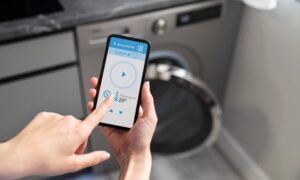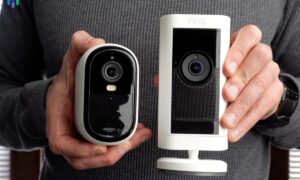Welcome to the fascinating world of IoT technology, where everyday objects are becoming smarter and more interconnected than ever before. From smart homes that can anticipate your needs to wearable devices that track your fitness levels, the possibilities seem endless. In this comprehensive guide, we will delve into the wonders of IoT technology, unraveling its intricacies and shedding light on its immense potential. So grab a cup of coffee, sit back, and prepare to be amazed as we embark on an exciting journey through this rapidly evolving landscape of innovation and connectivity.
What is IOT Technology?
IoT technology refers to the interconnectedness of physical objects and devices that are embedded with electronics, software, sensors, and network connectivity that enable these objects to collect and exchange data. When combined, these technologies can be used to create smart environments that improve efficiency, safety, and quality of life.
The term “Internet of Things” was first coined by British technology pioneer Kevin Ashton in 1999. Ashton was working on a project at Procter & Gamble at the time, and he came up with the term while trying to explain how RFID tags could be used to track inventory throughout the supply chain.
Since then, the concept of IoT has evolved considerably. In its most basic form, IoT is about connecting devices to the internet so they can send and receive data. This data can be used to trigger actions or notifications that make our lives easier or more efficient.
For example, you might have a smart thermostat in your home that automatically adjusts the temperature based on your schedule or whether anyone is home. Or you might have a fitness tracker that monitors your activity level and sleep patterns so you can make healthier choices.
IoT devices can range from simple sensors to complex systems with multiple components. But they all share one common goal: to make our lives better by collecting data and using it to automate tasks or provide valuable insights.
Advantages and Disadvantages of IOT
The advantages and disadvantages of IoT technology are both numerous and complex. To start, let’s explore the advantages of IoT technology. One major advantage of IoT technology is its ability to collect data. By collecting data from connected devices, businesses and organizations can gain valuable insights into trends and patterns. This data can be used to improve efficiency, optimize operations, and make better decisions. Additionally, IoT technology can help reduce costs by automating tasks and processes. For example, automated meter reading can eliminate the need for manual meter reading, saving time and money. Moreover, by connecting devices to the internet, businesses can remotely monitor and manage them, which can also lead to cost savings. Another advantage of IoT technology is its potential to improve safety and security. For example, by connecting security cameras to the internet, businesses can monitor their premises remotely in real-time. This can help deter crime and improve response times in the event of an incident. Additionally, IoT-enabled devices can be equipped with sensors that detect hazards or potential risks (e.g., smoke detectors), which can help protect people and property. IoT technology has the potential to improve customer service by providing customers with more information about products and services and giving them greater control over how they use them. For instance, customers could use a smartphone app to track the status of an order or service request in real-time.
Common Applications of IOT Technology
In recent years, the Internet of Things has become increasingly popular for a variety of applications. Here are some of the most common ways that IoT technology is being used today:
1. Home automation: By connecting various devices and appliances in the home to the internet, homeowners can remotely control and monitor them from their smartphones or other devices. This can include things like turning on/off lights, adjusting thermostats, checking security cameras, and more.
2. Commercial buildings: Similar to home automation, IoT technology can be used to manage and monitor commercial buildings. This includes things like HVAC systems, lighting, security, and energy usage.
3. Manufacturing: IoT sensors can be used in manufacturing facilities to track production data in real-time. This information can be used to improve efficiency and quality control.
4. Retail: Retailers are using IoT technology to track inventory levels, customer behavior, and sales data. This information can be used to improve store operations and customer service.
5. Transportation: IoT sensors and tracking devices are being used by transportation companies to track vehicles and cargo in real-time. This information can be used to optimize routes and prevent delays.
Security Issues Associated with IOT
Although the Internet of Things offers many potential benefits, there are also a number of security risks associated with this technology. One of the main concerns is that IoT devices are often connected to the internet and are therefore vulnerable to hacking. This could allow attackers to gain control of the device or access sensitive data. Another concern is that IoT devices generate a large amount of data, which could be used to create profiles of individuals or identify trends. This data could be misused or leaked, leading to privacy concerns. As IoT devices become more widespread, it is likely that they will be used for more critical applications such as healthcare and transportation. If these systems are not properly secured, it could lead to devastating consequences.
Examples of IOT Devices
There are a wide variety of devices that can be classified as IoT devices. In general, an IoT device is any device that is connected to the internet and can collect, send, or receive data. Some examples of popular IoT devices include:
-Smart thermostats: These devices can connect to your home’s Wi-Fi network and can be controlled remotely using a smartphone or tablet. They can also learn your temperature preferences over time and automatically adjust the temperature accordingly.
-Smart security cameras: These security cameras can connect to your home’s Wi-Fi network and send live video footage to your smartphone or tablet. They can also be equipped with motion sensors and night vision for added security.
-Smart light bulbs: These LED bulbs can connect to your home’s Wi-Fi network and be controlled remotely using a smartphone or tablet. They can also change colors and dim or brighten based on your preferences.
-Smart door locks: These locks can connect to your home’s Wi-Fi network and be opened or locked remotely using a smartphone or tablet. They can also be programmed to automatically lock when you leave the house and unlock when you return.
How to Get Started With IOT Development
The Internet of Things, or IoT, is one of the hottest topics in tech today. And for good reason: the possibilities for what can be done with connected devices are practically endless.
If you’re thinking about getting started with IoT development, there are a few things you need to know. First, you’ll need to have a clear understanding of what the IoT is and how it works. Once you have that foundation in place, you can start to explore the different ways you can develop for the IoT.
To get started, check out our comprehensive guide to IoT development. In it, we’ll cover everything from an introduction to the IoT to more advanced concepts like data processing and security.
Tips for Making the Most of Your IOT Setup
There are a number of things you can do to make the most out of your IoT setup. Here are some tips:
1. Keep your devices up to date: This may seem like a no-brainer, but it’s important to keep your devices updated with the latest firmware and software. Not only will this help improve performance and security, but it will also ensure compatibility with new products and services.
2. Use a reliable connection: When setting up your IoT devices, be sure to use a reliable and secure connection. This could be Wi-Fi or Ethernet, depending on your needs. Avoid using public Wi-Fi hotspots as they may not be secure.
3. Choose the right platform: There are many different platforms available for IoT, so it’s important to choose one that’s right for you. Consider factors such as ease of use, features, compatibility, and price when making your decision.
4. Secure your devices: Be sure to take steps to secure your IoT devices from hackers and other malicious actors. This includes using strong passwords, encrypting data, and enabling two-factor authentication where possible.
5.Monitor your data usage: With IoT devices constantly sending and receiving data, it’s important to monitor your usage to avoid exceeding your data limit or incurring additional charges from your service provider .
6. Use analytics and AI: IoT data can be used to gain valuable insights into how your devices are being used as well as potential trends. Utilizing analytics and AI technologies can help you make the most out of your device setup.
Conclusion
We have explored the wide-ranging possibilities that IoT technology can bring to many industries, from healthcare and agriculture to transportation and retail. With its potential for improved efficiency, reduced costs, enhanced customer experience, increased security and more, it is clear why so many companies are beginning to embrace the Internet of Things. Whether you are a business owner looking for ways to increase your competitive edge or an individual interested in learning more about this fascinating world of connected devices, we hope this guide has given you some insight into the wonders of IoT technology.



































